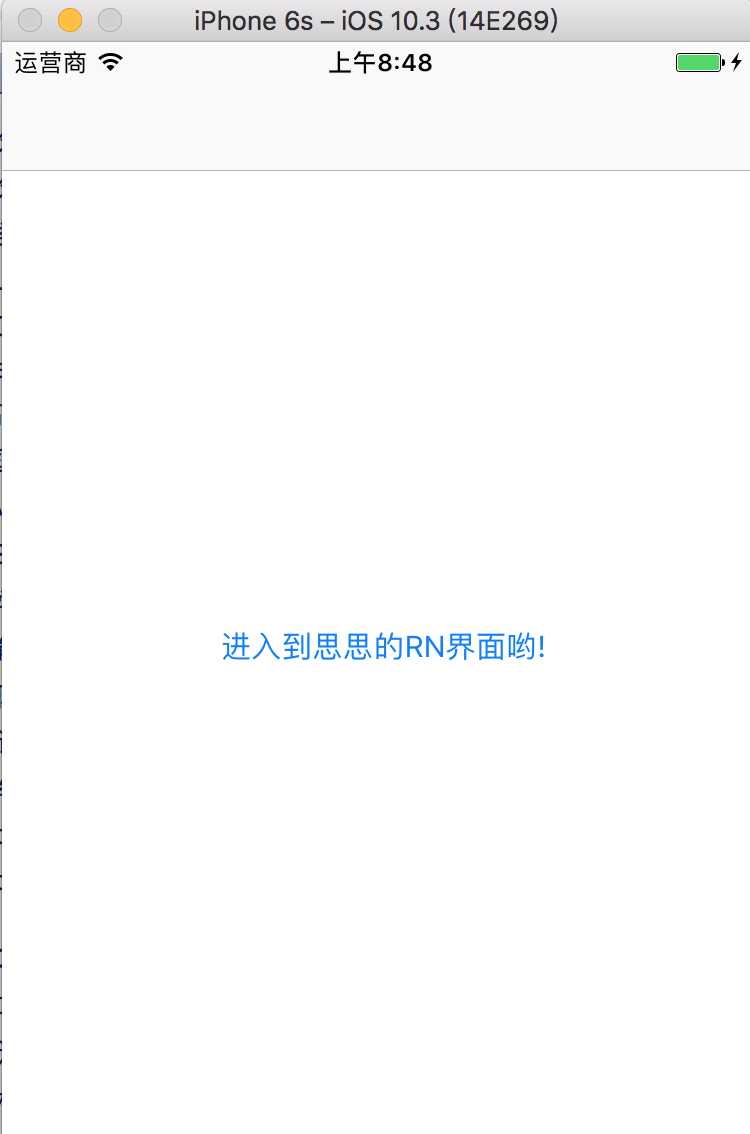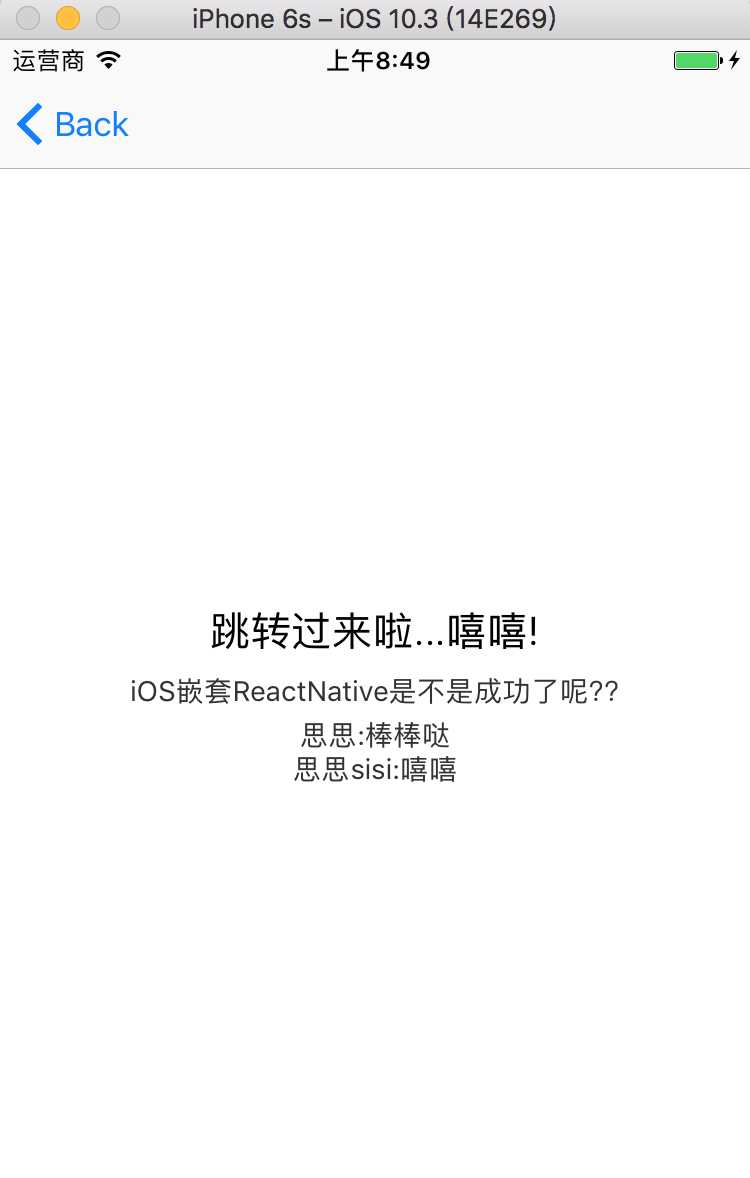标签:版本 des mon sources 相关 justify little boa sub
最近使用ReactNative做项目,有信心今天目标把ReactNative框架掌握,所以自己从每个知识点学习提高自己吧......
步骤如下:
一.创建依赖包文件(package.json):
React Native的植入过程同时需要React和React Native两个node依赖包。我们把具体的依赖包记录在package.json文件中。
如果自己创建package.json文件,终端操作:
cd 需要放置的目录下(项目的根目录/项目中自己创建的文件夹)
touch package.json
package.json添加以下内容:我这里使用的是0.44
{ "name": "iOSNestReactNative", "version": "0.0.1", "private": true, "scripts": { "start": "node node_modules/react-native/local-cli/cli.js start" }, "dependencies": { "react": "16.0.0-alpha.6", "react-native": "0.44.0" } }
使用npm(即node包管理器,Node package manager)来安装React和React Native模块。这些模块会被安装到项目根目录下的node_modules/目录中。
cd 项目的根目录/项目中自己创建的文件夹
npm install
等待执行完毕。项目中会多出一个node_modules文件夹。
在React和React Native模块成功安装到node_modules目录之后,你就可以开始创建Podfile以便选择所需的组件安装到应用中。
这里需要使用CocoaPods哟...我相信做iOS的应该都有这个吧...哈哈??
## 在iOS原生代码所在的目录中(也就是`.xcodeproj`文件所在的目录)执行:
$ cd 项目的根目录
$ pod init
修改Profile文件:
# 最低适配的版本 platform :ios, "9.0" use_frameworks! # target的名字一般与你的项目名字相同 target ‘iOSNestReactNative‘ do # ‘node_modules‘目录一般位于根目录中 # 但是如果你的结构不同,那你就要根据实际路径修改下面的`:path` #记得此处的路径,如果你有创建一个新的文件夹存放这些文件,前面要加上你文件夹的名字:‘../RNComponent/node_modules/react-native‘,如果没有,直接如下创建即可。 pod ‘React‘, :path => ‘./node_modules/react-native‘, :subspecs => [ ‘Core‘, ‘RCTText‘, ‘RCTNetwork‘, ‘RCTWebSocket‘, # 这个模块是用于调试功能的 # 在这里继续添加你所需要的模块 ] # 如果你的RN版本 >= 0.42.0,请加入下面这行 # 该版本号是package.json中的“dependencies”字典下面的“react-native”后面对应的内容 pod "Yoga", :path => "./node_modules/react-native/ReactCommon/yoga" end
创建好了Podfile后,就可以开始安装React Native的pod包了。
执行: pod install即可.
现在我们已经准备好了所有依赖,可以开始着手修改原生代码来把React Native真正植入到应用中了。
首先创建一个空的index.ios.js文件。一般来说我们把它放置在同上面的package.json的同级目录下.
$ cd 项目的根目录/项目中自己创建的文件夹
$ touch index.ios.js
在index.ios.js文件里写页面代码就可以了哟!!!
‘use strict‘; import React,{Component} from ‘react‘; import { AppRegistry, StyleSheet, Text, View } from ‘react-native‘; class RNHighScores extends React.Component { render() { // 这里是使用Xcode那边传过来的数据进行构建组件 var content = this.props[‘NameDict‘].map( name=><Text key = {name.name}>{name.name}:{name.value}{‘\n‘}</Text> ); return ( <View style={styles.container}> <Text style={styles.highScoresTitle}> 跳转过来啦...嘻嘻! </Text> <Text style={styles.scores}> iOS嵌套ReactNative是不是成功了呢?? </Text> <Text style={styles.scores}> {content} </Text> </View> ); } } const styles = StyleSheet.create({ container: { flex: 1, justifyContent: ‘center‘, alignItems: ‘center‘, backgroundColor: ‘#FFFFFF‘, }, highScoresTitle: { fontSize: 20, textAlign: ‘center‘, margin: 10, }, scores: { textAlign: ‘center‘, color: ‘#333333‘, marginBottom: 5, }, }); // 整体js模块的名称 AppRegistry.registerComponent(‘RNHighScores‘, () => RNHighScores);
先看一下我的Xcode的目录结构:

1>首先导入RCTRootView.h头文件;
// #import "RCTRootView.h",更新之后,需要导入下面的头文件。 // 官网的评论下方也有说明,否则会提示RCTRootView.h文件不存在。 #import <React/RCTRootView.h>
2>viewDidload中加入代码:
// // NextViewController.m // iOSNestReactNative // // Created by 思 彭 on 2017/6/16. // Copyright ? 2017年 思 彭. All rights reserved. // #import "NextViewController.h" // #import "RCTRootView.h",更新之后,需要导入下面的头文件。 // 官网的评论下方也有说明,否则会提示RCTRootView.h文件不存在。 #import <React/RCTRootView.h> @interface NextViewController () @end @implementation NextViewController - (void)viewDidLoad { [super viewDidLoad]; // self.view.backgroundColor = [UIColor grayColor]; // UIView *view1 = [[UIView alloc]initWithFrame:CGRectMake(100, 100, 100, 100)]; // view1.backgroundColor = [UIColor redColor]; // [self.view addSubview:view1]; NSURL *jsCodeLocation = [NSURL URLWithString:@"http://localhost:8081/index.ios.bundle?platform=ios"]; RCTRootView *rootView = [[RCTRootView alloc] initWithBundleURL : jsCodeLocation moduleName : @"RNHighScores" initialProperties : @{ @"NameDict" : @[ @{ @"name" : @"思思", @"value": @"棒棒哒" }, @{ @"name" : @"思思sisi", @"value": @"嘻嘻" } ] } launchOptions : nil]; self.view = rootView; } - (void)didReceiveMemoryWarning { [super didReceiveMemoryWarning]; // Dispose of any resources that can be recreated. } /* #pragma mark - Navigation // In a storyboard-based application, you will often want to do a little preparation before navigation - (void)prepareForSegue:(UIStoryboardSegue *)segue sender:(id)sender { // Get the new view controller using [segue destinationViewController]. // Pass the selected object to the new view controller. } */ @end
# 进入到node_modules文件夹所在的路径 $ cd 项目的根目录/项目中自己创建的文件夹 $ npm start
注意:直接运行项目会报Could not connect to development server错误,需要在项目中配置App Transport Security。(相信这个大家都会的啦~(≧▽≦)/~)
在info.plist中添加http
<key>NSAppTransportSecurity</key>
<dict>
<key>NSAllowsArbitraryLoads</key>
<true/>
</dict>
运行结果如下:


大功告成...耶耶耶!
Demo地址:https://github.com/PengSiSi/iOSNestReactNativeDemo
标签:版本 des mon sources 相关 justify little boa sub
原文地址:http://www.cnblogs.com/pengsi/p/7025769.html